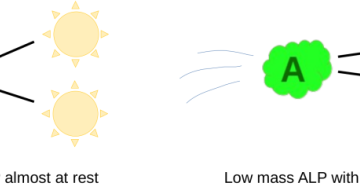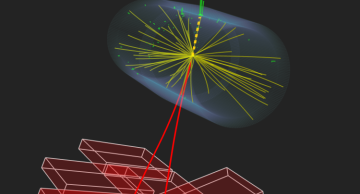The Higgs boson was one of the biggest scientific discoveries of the last decades and opened the doors to a new era for particle physics: unveiling its mysteries and measuring its properties. We already know a lot about how the Higgs boson is…
News
|
ajafari |
Physics
More than a decade after the discovery of the Higgs boson, we still expect this particle to give us first-hand information about theories that can solve some of the shortcomings of the standard model of particle physics (SM). For example, the…
|
sohurst |
Detector
In the same way that loud background noise does not allow us to listen to a conversation or appreciate a piece of music, so too the CMS detector needs a quiet environment to optimize data taking and analysis.
New shielding has been…
|
sohurst |
Detector
In this short series, we look at the different types of tests and steps needed for CMS to run at the precision the experiment requires.
Find part 1 here!
Part 2
First Beam Arrives
So far, the only tests and alignments that have taken place have…
|
sohurst |
Detector
It is compelling to picture large physics labs with lots of sparks and heavy levers that wake up big, important experiments with sparks and loud bangs.
Even if this were the case, CMS is too big and too complex to be started up by a simple pull of a…
|
ajafari |
Physics
Event display for a potential SUEP event, recorded at CMS in 2018, showing the characteristically high multiplicity of soft tracks in yellow.
Could there be a “dark world“ composed of invisible particles held together by a new strong dark force,…
|
ajafari |
Physics
Neutron stars, ultra-cold atomic gasses, and the quark-gluon plasma… You may find them totally unrelated but, surprisingly enough, they share a common feature: a fluid-like state of matter containing strongly interacting particles! An insight into…
|
ajafari |
Physics
A proton-proton collision at a centre-of-mass energy of 13 TeV, recorded by CMS, compatible with the production of a Higgs boson decaying to a J/ψ meson, which decays to two muons (red lines), and a high-energy photon (green box, top). Try to zoom…
|
ajafari |
Physics
The universe is governed by four known fundamental forces: gravity, electromagnetism, the weak force, and the strong force. The strong force is responsible for dynamics on an extremely small scale, within and between the individual nucleons of…
|
ajafari |
Physics
The main goal of the LHC physics programme is to deeply understand the fundamental principles of particles and their interactions. As part of this quest, physicists are searching for evidence of new particles, which would potentially confirm the…
|
ajafari |
Physics
Imagine diving into the very core of the universe, where the tiniest pieces that make up everything hold the answers to big cosmic questions. Leading this exciting journey is the CMS team at the Large Hadron Collider (LHC). We are on a mission to…
|
sohurst |
Collaboration
The time has come to wrap up the year! Ready? Let’s do it!
Not only did CMS celebrate the restart of LHC Run 3 in April at the record energy of 13.6 TeV, but this year also saw the long-awaited Heavy-Ion run. It marked the first Heavy-Ion run…












